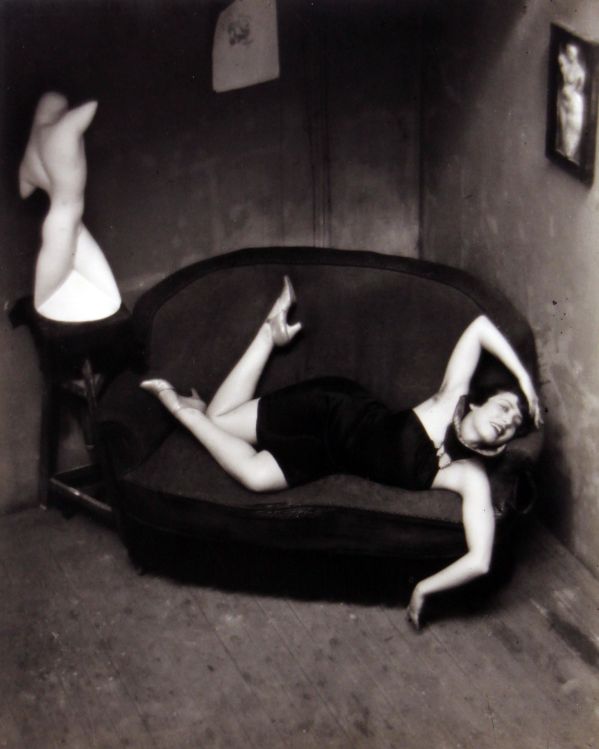Satiric Dancer is one of the earliest taken by André Kertész following his move to Paris in 1927 and embodies much of his artistic sensibility at the time. Taken in the studio of fellow Hungarian emigré István Beöthy, Kertész photographed the cabaret dancer and aspiring actress Magda Förstner as she lay out on the sofa, attempting to mimic the posture of Beöthy’s sculpture of a male torso, placed on a plinth to the left of the sofa. Kertész later recounted of the situation, “I said to her, ‘Do something with the spirit of the studio corner,’ and she started to move on the sofa. She just made a movement. I took only two photographs… People in motion are wonderful to photograph. No need to shoot a hundred rolls like people do today. It means catching the right moment. The moment when something changes into something else.” The photograph is an example of Kertész’s interest in modernist form which would preoccupy much of his photography throughout his career.
A framed image of a nude female figure which hangs on the wall at the right of the photograph completes the triangle of human form. Their various postures give the composition a dynamic visual energy that captures the experimental and playful atmosphere surrounding the avant-garde circles in Paris at the time. During the 1920s, Paris was the artistic centre of Europe, with Kertész befriending the Surrealists and Dadaists upon arriving in the city; their influence can be felt in this photograph with its tone of exuberance and the absurd. Kertész’s innovative use of camera angles skews the perspective of the photograph as he looks down at Förstner as she stretched out on the sofa, the scene appears cramped into a corner of the studio.
The liveliness inherent in this photograph is unique amongst Kertész’s body of work which often focused on singular subjects shot in close-up, and which frequently reflected Kertész’s own reclusiveness and sense of isolation. While he integrated into the avant-garde circles of Paris, his inability to fully speak the language meant that he remained an outsider. This sense of isolation escalated on his move to New York in 1936, escaping persecution for his Jewish heritage, Kertész was among many art world figures who migrated across the Atlantic and transformed New York into the new centre of the art world
